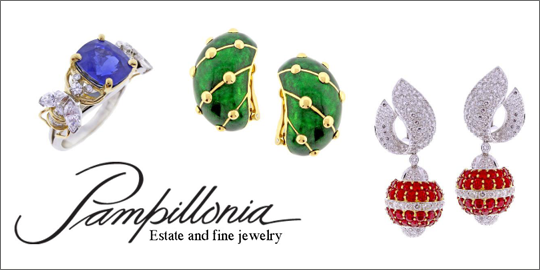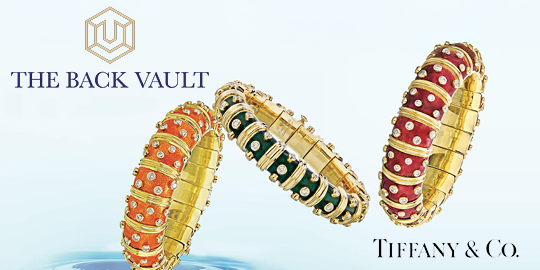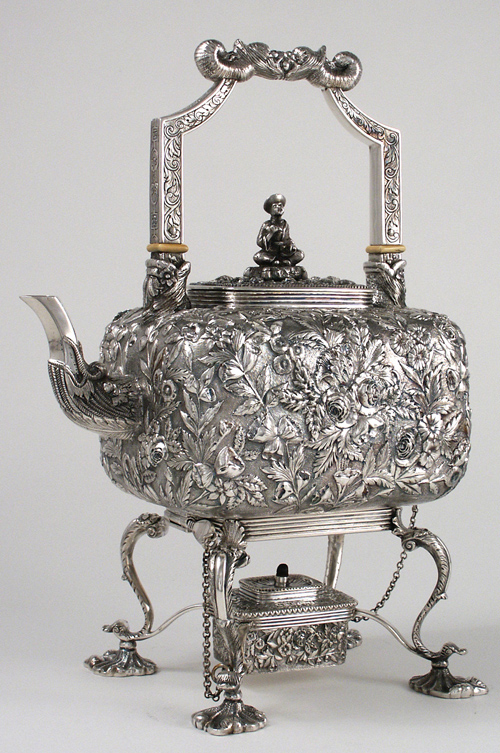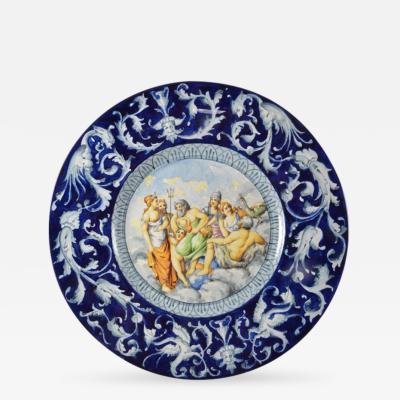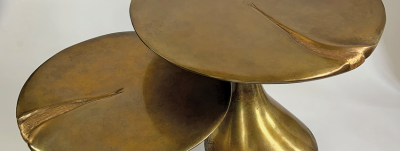Eliminating Antiques With Ivory Will Not Save The Elephants, It Will Only Destroy History
Action Required by Monday, September 28

- George Washington by John Ramage (circa 1748-1802). Watercolor on ivory, 1789. 2 1/8 x 1 1/2 in. In a private collection. Image courtesy Christie's, New York. Martha Washington commissioned John Ramage to paint this extraordinary image of her husband, George Washington; it is painted on ivory. Executed on the day of his inauguration, it is the first portrait of the new president. The reverse contains a lock of Washington's hair, which adds a sense of connection. The miniature remained in the family for more than a century and their names are engraved on the back. This ivory object is of tremendous historic cultural value and is a national treasure. There are thousands of people, historically significant or otherwise, whose images were painted on ivory and who contributed to the history of this nation. This portrait is now privately owned and does not meet the FWS requirements for the antiques exclusion so cannot leave the possession of the current owner---for loan to a museum, to be passed to heirs, moved across state lines, or potentially sold. Under current guidelines and if the "de minimus" requirements are not expanded in the proposed revisions to include items whose value is in the ivory, then this and other visual and historic records will be lost to history. What message are we sending and what is to become of a vital part of our heritage?
The loss of cultural and artistic heritage from the potential destruction of historic antiques containing elephant ivory and material from other endangered species is an unfortunate byproduct of the unrelated poaching of animals living today.* Immediate action is required to support proposed revisions in regulations put forth by the United States Fish and Wildlife Service allowing exemptions for antiques containing ivory (www.regulations.gov).
In 2014, the Fish and Wildlife Service (FWS) was given the directive to “implement a nearly complete ban on commercial elephant ivory trade.” This ban remains in effect (www.fws.gov). Such action, however, did not take into account the disastrous consequences the ban would have on historic antiques and artifacts—that have nothing to do with modern poaching—threatening their seizure and destruction if the material crosses state lines and international boundaries. The resulting punitive effects on collectors (and vested retirees), auction houses, and the antiques industry are palpable, unnecesarily affecting thousands of small businesses and private individuals. As a result of reaction to such extreme measures, on July 29, 2015, the FWS proposed to revise the African elephant rule under section 4(d) of the ESA [50 CFR 17.40 (e)]: (www.fws.gov).
The FWS is seeking commentary on the proposed revisions and the open comment period ends this Monday, September 28th at midnight. Comments supporting exemptions for antiques are critical because they can affect the ruling and potential future legal challenges; no comments may be added after the comment period closes; it will be too late. To comment, visit www.regulations.gov.
* The FWS defines ivory as “a tooth or tusk composed of ivory from an animal but not limited to an elephant, hippopotamus, mammoth, narwhal, walrus, or whale or a piece thereof, whether raw ivory or worked ivory, or made into or part of an ivory product.” Of additional note is that though much of what has been publicized about the proposed ban relates to ivory, other materials are also impacted (as noted in the above definition). Historically, decorated or carved whale bone, baleen, and scrimshaw teeth, for example, where byproducts of the whaling industry, which supported communities and provided essentials for generations. While there are certainly issues relating to such practices, historic material needs to be placed in context and should not be entrapped in the debate about the current trade in illegal animal materials.
Additional Information
When sending a comment in support of the revision under section 4(d), you can include additional information to further improve the proposed revisions and further protect antiques and antiquities containing ivory and other endangered species. For instance . . .
According to the FWS, the definition of an antique is an object that is 100+ years old. The FWS argues that it is not possible to differentiate between new and antique ivory, which is not true. Even so, the FWS has acknowledged setting a “high” bar for determining the age of ivory, with the burden of proof put on the owner or institution to provide documentation of age, particularly for any antique object imported after September 22, 1982, the date that “antique ports” were designated (but customs records are only required to be kept for five years so many may no longer be available for retrieval). Unfortunately for owners bringing items across state lines,whether from inheritance, for commerce, or otherwise, the paperwork involved is incredibly burdensome even if provenance can be established. With such a potentially unattainable benchmark needing to be secured for each item, the FWS has acknowledged the result would be “a near total ban on the domestic commercial trade of African elephant ivory" (FWS press release, July 25, 2015).
The ivory in antiques is not the ivory being illegally poached, and such requirements for proving provenance may result in the financial loss of hundreds of millions of dollars in antiques owned by collectors, museums, and antiques dealers. As for museums, they have been given some exemptions but will not be able to add to their collections, and the lengthy and expensive process in filing paperwork for antique ivory objects that need to cross state lines or travel overseas for exhibitions would make lending or loaning such objects (that have nothing to do with the current illegal trade) unattainable.
Another argument takes issue with the 100+ year time frame, specifically relevant to antiques from the early- to mid-twentieth century, including material from the Art Deco period (see image above). Such items, of which there are many and of historic importance, are not protected by the proposed revisions at all and will therefore be subject to seizure and potential destruction unless the FWS amends the time frame for what constitutes an antique. Perhaps the U.S. should align the dates with those of Europe (mid-20th century)? Comment is particularly necessary for this point to be heard. Musical instruments that contain ivory have a different set of parameters (www.americanorchestras.org)
In regard to such restrictions, the legal counsel for the Ivory Antiques Preservation Society has made the salient point that “The Endangered Species Act contains a Congressionally-mandated exemption for antiques. Changing long-standing interpretations exempting antiques and thereby destroying a substantial portion of the value of existing collections is so draconian that it would require a clear grant of authority from Congress. FWS cannot destroy the exemption by retroactively requiring that owners prove their antiques entered through an ‘antique port’ if the item had been imported after 1983, or that the item was imported before 1983.”
In addition, Dr. Daniel Stiles, one of the leading conservationists and experts on African elephants and the illegal ivory trade, has submitted a comment on the www.regulations.gov website expressing frustration that his research has been misrepresented by both the FWS and by NGOs (determined on a total ivory ban) for misleading the public about illegal ivory in America (www.regulations.gov). He strongly opposes the current legislative efforts. According to Dr. Stiles’ research, the majority of poaching is for speculators in the Asian and African markets, responsible for 20,000 to 30,000 estimated elephant poaching deaths a year; the US market is responsible for a fraction of that amount (estimation is at most ten elephants). Stiles argues, “. . . the law that existed prior to February 2014 [the FWS's Director's Order No. 210] is adequate to address the problem of illegally importing ivory [www.fws.gov]. The proposed changes would have little to no effect on the way the vast majority of illegal ivory enters the U.S. or is traded interstate. . . Denying antiques legal importation will not address the smuggling problem. . . The revised rules are meant to address [a] perceived problem.” He continues, stating that the best way to tackle poaching is to spend the funds addressing the real problem of speculation abroad, and in conservation efforts, not in misguided legislation. A March 2013 CITES report states the U.S. accounts for less than .2% of the illegal ivory trade, also noting the greatest offenders are responding to demand in Asia and Africa. This information is certainly not suggesting we ignore the illegal smuggling trade within the United States. The death of any elephant for purposes of financial gain is abhorrent, but there is a disconnect between current illegal poaching and antique ivory. Ironically, the proposed FWS revisions actually note: “We do not believe the [antiques] trade is contributing to the poaching of elephants and we believe the risk of illegal trade is low.”
The Antiques Exception and “de minimis” Requirement
In a July 29, 2015 briefing, FWS Director Daniel Ashe summarized salient points of the 95-pages of proposed revisions under section 4(d) (www.fws.gov). Among those were the following (quoted from the policy): “We propose to allow sale of ivory . . . in interstate or foreign commerce . . . without a threatened species permit for manufactured items containing de minimis amounts of ivory, provided they meet the following criteria: . . . the ivory is a fixed component . . . of a larger manufactured item and is not, in its current form, the primary source of value of the item; the manufactured item is not made wholly or primarily of ivory; the total weight of the ivory component is less than 200 grams; the ivory is not raw; and the item was manufactured before the effective date of the final rule for this action.” The text further defines several of the points including, “We understand the 200-gram limit would cover a broad range of decorative and utilitarian objects containing small amounts of ivory (insulators on tea pots [see illustration], decorative trim on baskets, and knife handles, for example) . . . Examples of items that we do not expect would qualify for the de minimis exception include chess sets with ivory chess pieces . . . an ivory carving on a wooden base . . . and ivory earrings or a pendant with metal fittings . . . “
The FWS seeks guidance from experts, antiques dealers, collectors, and anyone who wishes to speak on behalf of the objects regarding this section in particular. For instance, the FWS decided on a 200-gram limit after discussion with musical instrument specialists, but conservators and other musical instrument experts in the field have advocated that 350 grams should be used instead to take into account different thicknesses of ivory piano keys. Comments should also be made to speak on behalf of items that are under 200 grams such as chess pieces or netsuke, but which are also made entirely of ivory. As noted in the proposed revisions, items under 200 grams would qualify for the antiques exception, but not those for which the primary souce of value is the ivory (and any carved features). Therefore, even with the proposed amendments, such items will not be allowed to be sold or transferred across state lines without fear of seizure and destruction along with a fine and potentially other penalties.
Please take action to submit comments supporting the revisions under section 4(d) and, if you feel it to be the case, also comment about how you feel the revisions fall short and need further amending. You may borrow text from above and incorporate your own experiences and insight. An important part of our cultural and decorative history is at stake. The historic trade in and manufacture of goods with ivory is unrelated to the issue of elephant poaching today; most of the ivory in the United States was imported legally and many years ago.
There are currently more than 1 million comments on the regulatory site. Most of these are by supporters of a complete ban; your support of antiques and our cultural history is vital so if you have not yet commented, please do. If you have commented, do so again! (It's legal and encouraged!) A comment can be anonymous if you prefer. The “Endangered and Threatened Wildlife and Plants: African Elephant Rule: Revision” is currently a trending topic on the page, but if you cannot find it, type “FWS-HQ-IA-2013-0091 in the search bar. Otherwise, go to www.regulations.gov and comment often! Thank you.









